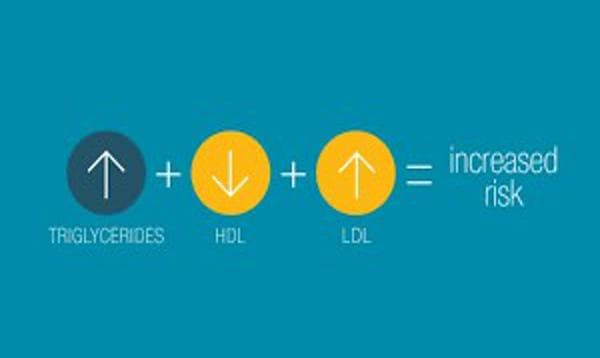
Cholesterol Ratio Calculator – Assess Your Heart Disease Risk
Learn about Cholesterol Ratio, its significance, calculation, and how to use it to assess your heart disease risk.
January 5, 2025
Learn about the Triglyceride-to-HDL Ratio, its importance, calculation, and how to use it to assess cardiovascular risk.

The Triglyceride-to-HDL Ratio is a measure that compares the levels of triglycerides (a type of fat) to HDL (High-Density Lipoprotein) cholesterol in your blood. It is used to assess your risk of cardiovascular disease, as it reflects the balance between these two important components of blood lipids.
The Triglyceride-to-HDL Ratio is important because it provides a clearer picture of your cardiovascular risk than triglyceride or HDL levels alone. A higher ratio indicates a higher risk of heart disease, while a lower ratio suggests a lower risk. This ratio helps healthcare providers identify individuals at risk and tailor prevention and treatment strategies.
To calculate your Triglyceride-to-HDL Ratio, divide your triglyceride level by your HDL cholesterol level:
Triglyceride-to-HDL Ratio = Triglycerides / HDL Cholesterol
For example, if your triglyceride level is 150 mg/dL and your HDL cholesterol level is 50 mg/dL, your ratio would be 3.
A high Triglyceride-to-HDL Ratio is associated with an increased risk of cardiovascular disease because it reflects a higher level of triglycerides and/or a lower level of HDL cholesterol. High triglycerides contribute to the buildup of plaque in the arteries, while low HDL cholesterol reduces the removal of excess cholesterol from the bloodstream.
Diet and lifestyle choices significantly impact triglyceride levels:
To improve your Triglyceride-to-HDL Ratio:
Our Triglyceride-to-HDL Ratio Calculator is user-friendly and provides an estimate of your Triglyceride-to-HDL Ratio. Enter your triglyceride and HDL cholesterol levels to calculate your ratio. Use this information to assess your cardiovascular risk and take steps to improve your heart health.
There are several myths about triglycerides and heart health that can lead to confusion:
Understanding and monitoring your Triglyceride-to-HDL Ratio is essential for maintaining cardiovascular health and preventing heart disease. Use our Triglyceride-to-HDL Ratio Calculator to determine your ratio and take proactive steps to improve it. By making heart-healthy lifestyle choices, you can maintain a balanced Triglyceride-to-HDL Ratio and reduce the risk of cardiovascular disease.
More Articles

Learn about Cholesterol Ratio, its significance, calculation, and how to use it to assess your heart disease risk.
January 5, 2025

Learn about LDL and HDL Cholesterol, their differences, importance, and how to use the LDL & HDL Cholesterol Difference Calculator to maintain healthy cholesterol levels.
January 5, 2025

Learn about stroke, its risk factors, assessment, and how to use the Stroke Risk Assessment Calculator to measure your risk level and improve your health.
January 5, 2025

Learn about Coronary Heart Disease (CHD), its risk factors, calculation, and how to use the information to maintain heart health.
January 5, 2025

Discover Mean Arterial Pressure (MAP), its significance, calculation, and how to use it to assess circulatory health.
January 5, 2025